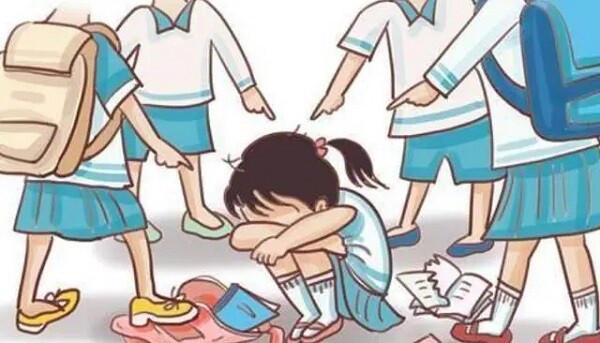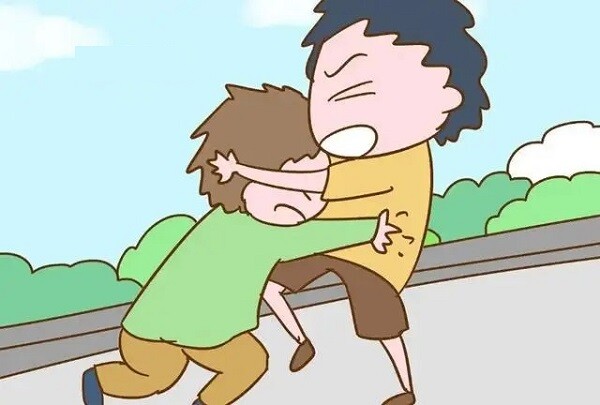A preschool teacher with nearly 20 years of experience has observed that about 90% of bullied children lose because they don’t know how to cope. This affects the children’s psychology, leaving long-term psychological scars and making them shy and lacking in confidence. Therefore, she has come up with five effective anti-bullying techniques that parents can refer to and teach their children.


Why are children easy targets for bullying?
Bully’s “prey” filtering mechanism
According to research on children’s behavior, bullies instinctively choose:
– Children who avoid eye contact (considered easy to bully)
– Children who don’t dare to say no (will try harder after being challenged)
– Children who don’t report effectively (low cost of bullying)
Three mistakes parents often make when they know their child is being bullied
– “Just ignore them” → This is like telling the child to endure bullying.
– “Why don’t you fight back?” → This does secondary damage to the child’s self-esteem.
– Contacting the bully’s parents directly → This can lead to more subtle retaliation.

Shy children are often easy targets for bullies.

Five golden coping strategies for bullying (different ages)

Image source: Pinterest.
Use the “threatening gaze” to create an aura (3 years old and above)
Scientific principle: Staring at someone’s nose for more than 3 seconds will activate the brain’s threat alarm.
How to do it: Stand up straight with your feet shoulder-width apart. Stare at the person’s nose (easier than staring into the eyes) and say, “You can’t bully me!” (loud enough for the teacher to hear)
Effectiveness: 70% of bullying situations will temporarily stop here.
Create a “social crowd” effect (4 years old and above)
Psychological basis: Bullies are most afraid of being caught.
Sample response: “Everyone, look! A doesn’t let me play on the slide!” (to attract the attention of other children) “The teacher said we have to take turns playing with the toys!” (quoting the rules to increase deterrence)
Note: Confirm the keywords of the classroom rules with your child (such as “sharing” and “lining up”).
The method of asking “proactive” questions (5 years old and above)
Advanced speaking skills (suitable for children with good language skills): “Why did you take my toy?” (forcing the other person to think) “If you push someone, you’ll be asked to go to the calm corner. Do you want to go?” (implying consequences)
A kindergarten in Beijing showed that the bullying rate of children using this method decreased by 62%.

Parents should teach their children how to cope with bullying early on.
Build a “Protection Alliance” (all ages)
Steps to take:
– Help your child connect with 2-3 friendly peers.
– Teach your child to say: “I play with Lele/Doudou!”
Bullies usually don’t challenge small groups.
Data: Children with regular playmates are only one-third as likely to be bullied as those who are alone.
Ultimate weapon – “teacher-understandable” complaint (key!)
Ineffective reporting: “Teacher, he’s bullying me” (the teacher can’t assess the seriousness of the situation)
Effective complaints according to these:
Describe the specific behavior: “Xiao Qiang stole my red truck.”
Explain the child’s feelings: “I’m sad because it was a gift from my grandfather.”
Make a clear request: “Please help me get it back.”
Children may be seriously bullied when:
– They repeatedly draw battle scenes in black/red.
– They suddenly don’t want to wear certain types of clothes (may deliberately stain them)
– They wake up in the middle of the night and say, “I don’t want to go to kindergarten.”
Response procedure:
– Use puppet shows to reenact the scene (children will more easily express themselves)
– Contact the teacher to check on supervision (avoid directly asking the other child’s parents)

Three things parents should not do when their child is being bullied
Teach your child to “resist”
This can turn the child from a victim into a co-offender.
A more appropriate way is to teach them how to block.
Criticize the teacher in front of the child
This will weaken the child’s sense of safety in kindergarten.
Labeling the bully
Describing the “bad child” can increase the child’s fear.

Develop three daily habits to create an “unbothered” aura
Let your child play sports
Children who practice martial arts or play sports tend to be healthier and more confident, reducing the likelihood of being bullied. One of the greatest benefits of learning martial arts is the ability to defend oneself. Children are taught to recognize and respond to dangerous situations, creating a greater sense of safety in their daily lives.
This ability makes children feel more confident, making bullies hesitate to confront them.
Look at picture books about anti-bullying
To help children understand and become aware of anti-bullying strategies through images, parents can search for or create a picture book on this topic.
– Drawings of children chatting happily, showing respect and friendship.
– Images of children displaying different emotions when bullied and appropriate responses, such as saying “stop” or seeking help.

Children who practice martial arts or play sports tend to be healthier and more confident.
– Drawings of a child standing up against bullying peacefully or children resolving the problem together.
– Images of children talking to teachers or adults about being bullied, showing a desire for support.
– Drawings illustrating self-defense techniques that children can learn from martial arts or sports classes.
Family meetings
Let your child be the host for 5 minutes each week (to develop a sense of authority). Kindergarten is the first “small society” that children encounter. Parents cannot shield their children from all challenges, but they can provide them with psychological armor. All the coping strategies that parents teach are laying the foundation for their children’s lifelong social skills.



































